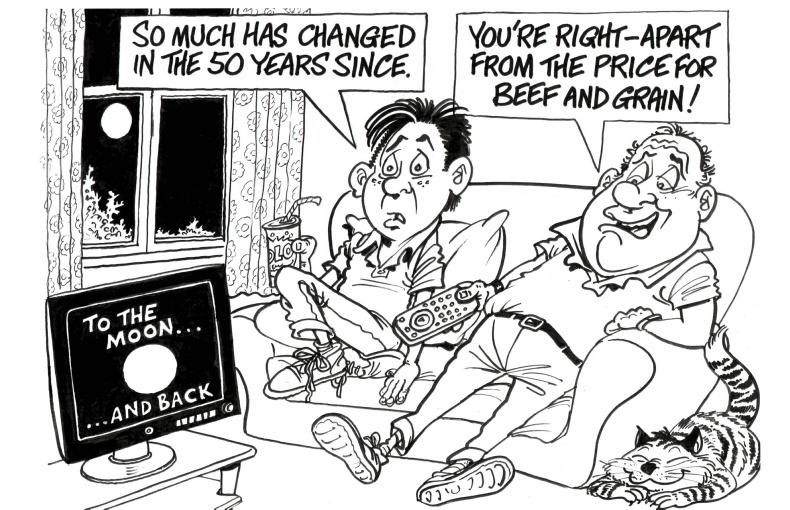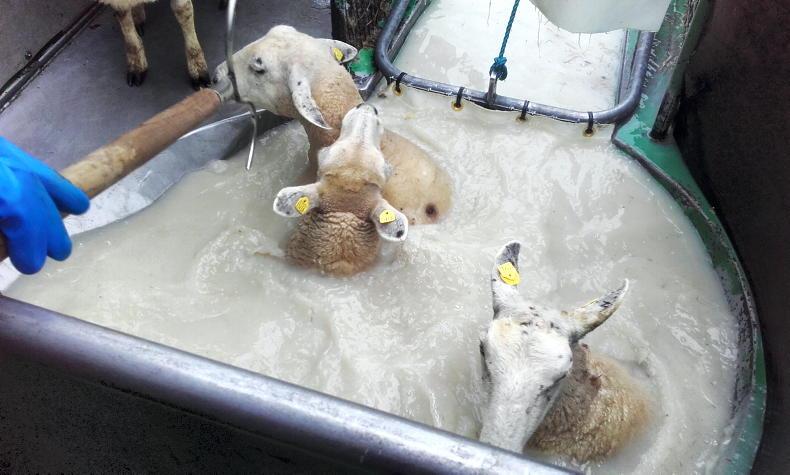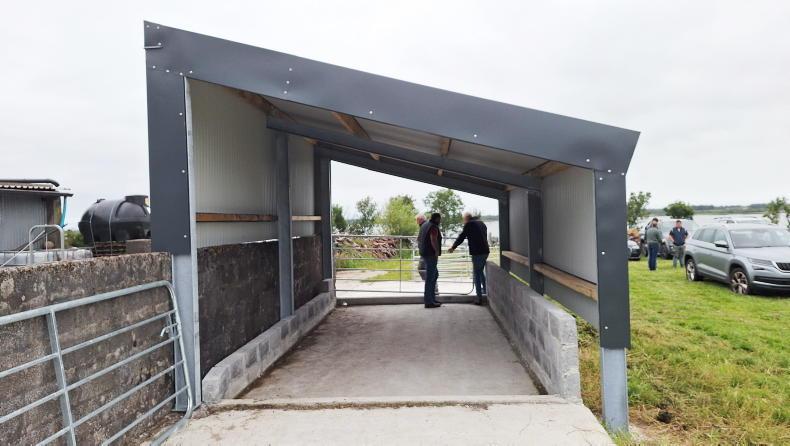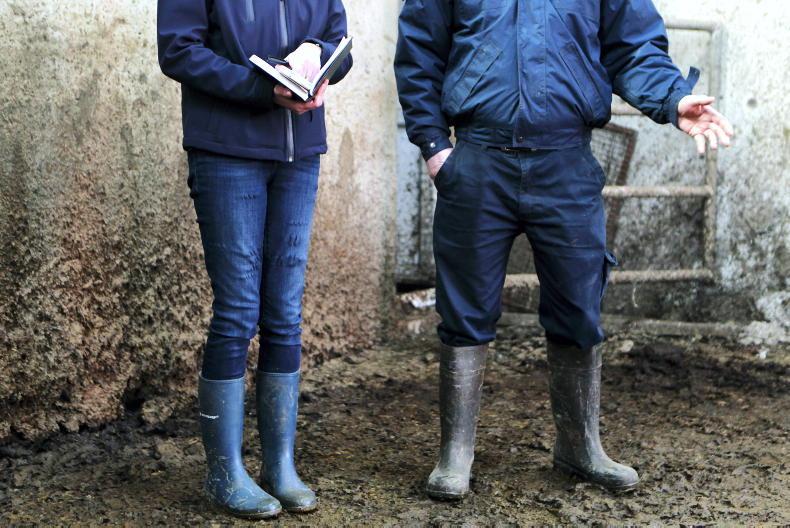This week, Adam Woods details how the Government plans to distribute the €100m Brexit-aid package announced in June. Support will be paid to suckler farmers and farmers who slaughtered animals in the reference period (24 September 2018 to week commencing 6 May 2019) through a new Beef Exceptional Aid Measure (BEAM) scheme.
One of the key aspects of the scheme is the requirement to reduce organic nitrogen output per farm by 5%. This effectively translates into a 5% reduction per hectare as on most farms each hectare farmed is directly linked to the number of entitlements under the Basic Payment Scheme (BPS) – meaning that reducing land area, in line with lower stock numbers, will not be an option.
In this scenario farmers’ participation in the BEAM scheme will effectively be incentivisied to reduce both stock numbers and stocking rate per hectare, albeit on a limited number of farms. Targets may be achieved by slaughtering/selling stock at a younger age.
The move to incentivise a reduction in stocking rate per hectare is hugely significant. It is totally at odds with Teagasc advice which has repeatedly identified a low stocking rate per hectare on suckler and beef farms as one of the biggest challenges to achieving a sustainable level of profitability. One of the key focuses of the Knowledge Transfer (KT) programme, in which millions of euro of CAP funding has been invested over the past five years, was to increase profitability by encouraging suckler and beef farmers to increase stocking per hectare through the adoption of better grassland management practices.
Similarly the Teagasc Grass 10 programme, which has been part-funded by the Department of Agriculture, is no longer of any relevance to farmers participating in the BEAM scheme. Increasing grass growth without the ability to increase stocking rate per hectare is a pointless exercise.
In the Teagasc/Irish Farmers Journal BETTER Farm programme, driving up stocking rate through improved grassland management has been the cornerstone to achieving increased profitability.
Are we now to assume that based on the conditions attached to the BEAM scheme, the agenda at national level is to incentivise Irish suckler and beef farmers to become less technically efficient? Minster for Agriculture Michael Creed cannot use the European Commission’s implementation regulations as a defence to adopting such an approach.
While the regulations do provide scope for production reduction measures, they also gave scope for Ireland to align supports towards a restructuring of its beef industry to protect its long-term viability.
The distribution model designed through the BEAM scheme simply shines a light on just how rudderless our suckler and beef sector has now become. The lack of any vision or plan for the sector has seen the minister opt for a politically safe scatter-gun approach to distributing funds rather than a targeted approached, aligned to a long-term vision for the sector.
Similarly the policy objectives within the scheme are knee-jerk – aimed at trying to find a quick-fix solution to a growing national cattle herd; with little regard for the long-term consequences on the future profitability of the sector.
Traditionally this “sticking plaster” approach has bought the Minister breathing space in the face of a crisis – but not on this occasion. As we report on page 1, farmers have seen beef prices collapse by a further 30c/kg since the end of the reference period for the BEAM scheme. It is no surprise that attention is now focusing on the need for a BEAM 2. Having now established a precedent, both Minister Creed and European Commissioner for Agriculture Phil Hogan will be under pressure to deliver. However, before going back to Brussels seeking support for another scheme, Minister Creed needs to bring key stakeholders together with the aim of putting a clear plan in place as to the future direction of the sector. Any future support mechanism should be directly aligned to delivering on this plan.
Meanwhile in dealing with the current crisis in the beef sector, the IFA has called on Commissioner Hogan to impose an immediate suspension of beef imports into the EU. It is a credible expectation given the turmoil we are seeing in the EU beef market and impact on farmer incomes. A precedent has been established – earlier this year the European Commission moved to increase the import duty on brown rice into the EU from Cambodia and Myanmar to protect the income of Italian farmers.
Harvest time critical for grain growers
Harvesting of winter barley is under way. Harvest season represents the most important period of the year for tillage farmers as it is a single harvest enterprise.
And for most this is also a single sale period based on the evaluation of overall market supply. Harvest is always a price pressure point as exporting nations harvesting before us act to unload perceived surpluses or to deliver on forward business.
As we enter harvest, the global production outlook remains strong but this could still change. But it is obvious at this point that price offers over the past year were much stronger than current price trends, emphasising the importance for growers of being conscious of marketing options. But growers also need buy-in from the overall industry. The price of the native grains should not be totally dictated by the source of cheapest imports.
Irish food is about the combined use of all our assets and our expertise. Early indications suggest that yields are reasonable, but variable. However, they will not offset the likely price drop from last year’s €200/t level. For this reason straw value is important as growers attempt to add that additional tonne in value to offset the price drop.
Strong leadership required to shape Ornua direction
Corporate governance issues around the board table of Ornua are nothing new. The proposal to restructure Ornua from a co-op into an unlisted plc is an option that needs to be carefully considered.
Is a corporate restructuring necessary to address the governance issues and what will it deliver for farmers? It’s a time where strong leadership by farmers who sit on the boards of co-ops and farm organisations is required to shape the direction of a key business within the expanding dairy sector.
We need to look at dairy business models across the world that are continually delivering a premium price back to farmers.
Farm safety top of the agenda
It is positive to see farm safety at the top of the farming agenda as part of the IFA national farm safety week.
In our focus supplement this week, supported by FBD, we look at what steps can be taken to make your farm a safer place. It does not always require big investments or radical changes in work practices – simple steps can make a big difference.
The first action should be to have a discussion with the family around the kitchen table. Why not commit as a family to taking 10 steps over the next 10 days to reduce safety risks around the yard.
We look forward to welcoming you to our beef and sheep open day on Tullamore Farm next Wednesday, 24 July.
The event takes place at a time when many farmers are questioning their future in the sector. We will detail the financial performance of the suckler and sheep systems and look at the impact of falling market prices on the profitability of the farm.
We will also discuss the role that the bull beef system plays in underpinning farm performance and the impact that a move towards steer beef would have on profitability. Alongside this we will run a number of practical demonstrations on the key management practices deployed on the farm.
This week, Adam Woods details how the Government plans to distribute the €100m Brexit-aid package announced in June. Support will be paid to suckler farmers and farmers who slaughtered animals in the reference period (24 September 2018 to week commencing 6 May 2019) through a new Beef Exceptional Aid Measure (BEAM) scheme.
One of the key aspects of the scheme is the requirement to reduce organic nitrogen output per farm by 5%. This effectively translates into a 5% reduction per hectare as on most farms each hectare farmed is directly linked to the number of entitlements under the Basic Payment Scheme (BPS) – meaning that reducing land area, in line with lower stock numbers, will not be an option.
In this scenario farmers’ participation in the BEAM scheme will effectively be incentivisied to reduce both stock numbers and stocking rate per hectare, albeit on a limited number of farms. Targets may be achieved by slaughtering/selling stock at a younger age.
The move to incentivise a reduction in stocking rate per hectare is hugely significant. It is totally at odds with Teagasc advice which has repeatedly identified a low stocking rate per hectare on suckler and beef farms as one of the biggest challenges to achieving a sustainable level of profitability. One of the key focuses of the Knowledge Transfer (KT) programme, in which millions of euro of CAP funding has been invested over the past five years, was to increase profitability by encouraging suckler and beef farmers to increase stocking per hectare through the adoption of better grassland management practices.
Similarly the Teagasc Grass 10 programme, which has been part-funded by the Department of Agriculture, is no longer of any relevance to farmers participating in the BEAM scheme. Increasing grass growth without the ability to increase stocking rate per hectare is a pointless exercise.
In the Teagasc/Irish Farmers Journal BETTER Farm programme, driving up stocking rate through improved grassland management has been the cornerstone to achieving increased profitability.
Are we now to assume that based on the conditions attached to the BEAM scheme, the agenda at national level is to incentivise Irish suckler and beef farmers to become less technically efficient? Minster for Agriculture Michael Creed cannot use the European Commission’s implementation regulations as a defence to adopting such an approach.
While the regulations do provide scope for production reduction measures, they also gave scope for Ireland to align supports towards a restructuring of its beef industry to protect its long-term viability.
The distribution model designed through the BEAM scheme simply shines a light on just how rudderless our suckler and beef sector has now become. The lack of any vision or plan for the sector has seen the minister opt for a politically safe scatter-gun approach to distributing funds rather than a targeted approached, aligned to a long-term vision for the sector.
Similarly the policy objectives within the scheme are knee-jerk – aimed at trying to find a quick-fix solution to a growing national cattle herd; with little regard for the long-term consequences on the future profitability of the sector.
Traditionally this “sticking plaster” approach has bought the Minister breathing space in the face of a crisis – but not on this occasion. As we report on page 1, farmers have seen beef prices collapse by a further 30c/kg since the end of the reference period for the BEAM scheme. It is no surprise that attention is now focusing on the need for a BEAM 2. Having now established a precedent, both Minister Creed and European Commissioner for Agriculture Phil Hogan will be under pressure to deliver. However, before going back to Brussels seeking support for another scheme, Minister Creed needs to bring key stakeholders together with the aim of putting a clear plan in place as to the future direction of the sector. Any future support mechanism should be directly aligned to delivering on this plan.
Meanwhile in dealing with the current crisis in the beef sector, the IFA has called on Commissioner Hogan to impose an immediate suspension of beef imports into the EU. It is a credible expectation given the turmoil we are seeing in the EU beef market and impact on farmer incomes. A precedent has been established – earlier this year the European Commission moved to increase the import duty on brown rice into the EU from Cambodia and Myanmar to protect the income of Italian farmers.
Harvest time critical for grain growers
Harvesting of winter barley is under way. Harvest season represents the most important period of the year for tillage farmers as it is a single harvest enterprise.
And for most this is also a single sale period based on the evaluation of overall market supply. Harvest is always a price pressure point as exporting nations harvesting before us act to unload perceived surpluses or to deliver on forward business.
As we enter harvest, the global production outlook remains strong but this could still change. But it is obvious at this point that price offers over the past year were much stronger than current price trends, emphasising the importance for growers of being conscious of marketing options. But growers also need buy-in from the overall industry. The price of the native grains should not be totally dictated by the source of cheapest imports.
Irish food is about the combined use of all our assets and our expertise. Early indications suggest that yields are reasonable, but variable. However, they will not offset the likely price drop from last year’s €200/t level. For this reason straw value is important as growers attempt to add that additional tonne in value to offset the price drop.
Strong leadership required to shape Ornua direction
Corporate governance issues around the board table of Ornua are nothing new. The proposal to restructure Ornua from a co-op into an unlisted plc is an option that needs to be carefully considered.
Is a corporate restructuring necessary to address the governance issues and what will it deliver for farmers? It’s a time where strong leadership by farmers who sit on the boards of co-ops and farm organisations is required to shape the direction of a key business within the expanding dairy sector.
We need to look at dairy business models across the world that are continually delivering a premium price back to farmers.
Farm safety top of the agenda
It is positive to see farm safety at the top of the farming agenda as part of the IFA national farm safety week.
In our focus supplement this week, supported by FBD, we look at what steps can be taken to make your farm a safer place. It does not always require big investments or radical changes in work practices – simple steps can make a big difference.
The first action should be to have a discussion with the family around the kitchen table. Why not commit as a family to taking 10 steps over the next 10 days to reduce safety risks around the yard.
We look forward to welcoming you to our beef and sheep open day on Tullamore Farm next Wednesday, 24 July.
The event takes place at a time when many farmers are questioning their future in the sector. We will detail the financial performance of the suckler and sheep systems and look at the impact of falling market prices on the profitability of the farm.
We will also discuss the role that the bull beef system plays in underpinning farm performance and the impact that a move towards steer beef would have on profitability. Alongside this we will run a number of practical demonstrations on the key management practices deployed on the farm.










SHARING OPTIONS